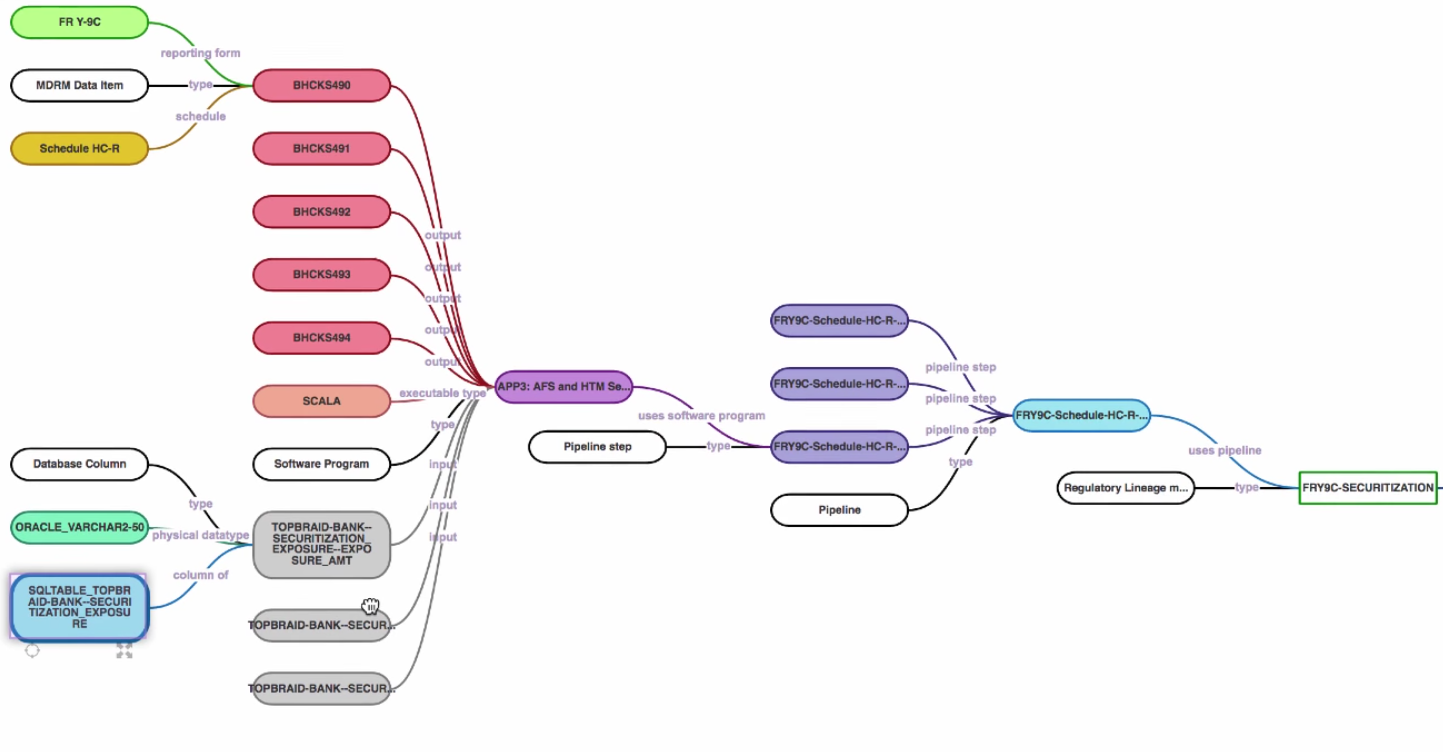It’s no surprise that most of the buzz at the recent Data Governance Financial Services Conference in New Jersey was focused on the increasing demands that the industry faces in fulfilling regulatory requirements. The challenges we heard from attendees on the show floor mimicked the conversations we are having with our customers in financial services. They have extensive, sophisticated IT systems, which need to be able to connect to one another while at the same time they must:
|
<< Click on image below for larger view >> See our demo: Data Lineage Tracking – Essential for Compliance Reporting |
This explains why a recent 2016 Financial Industry Management (FIMA) survey states that:
- 83% of respondents said that data governance is vital to their business
- 50% of respondents indicated their firms are making investments greater than $12M in 2016 in IT solutions that improve Data Governance
One of our current financial services customers recently had one of the big business strategy consulting firms produce an inventory of their applications – it is in a spreadsheet and represents on the order of 60-80K applications. They are now importing this data into our TopBraid Enterprise Data Governance (TopBraid EDG) solution. This is the starting point for connecting these applications with the data sources they use. This is part of our motivation for developing TopBraid EDG, which is to enable the representation and connection of the multiple types of data governance assets that are needed to enable people to answer the question: “Where does this data come from?”
We are able to do this because TopBraid EDG is based on the standard for capturing semantics of data –RDF created by W3C, which is also responsible for HTML and XML. They developed RDF specifically to address distribution and integration, connectivity and linking of data and metadata that are so ubiquitous in the modern enterprise infrastructure. Increasingly, companies recognize the importance of describing semantics using a standards-based approach as opposed to vendor proprietary approaches (which create yet another silo and create barriers to interoperability and vendor lock-in).
One example of this growing recognition is the effort around FIBO — the Financial Industry Business Ontology. FIBO uses RDF to describe entities and concepts key for the financial services industry. This effort is led by the EDM Council with participation from all major banks. Ontologies are becoming important as key business models, because they describe in a systematic and standardized way, the key things and relationships that are typical to any endeavor in healthcare, search and of course financial services. The benefit is that the meaning is preserved across different endeavors and enterprises enabling understanding, consistency, reuse and automation.
FIBO comes pre-packaged with our product. This is easy to do since FIBO is in RDF and our products are based on RDF. This means you can 1. use FIBO directly while seamlessly incorporating all updates as they become available 2. further, you can easily extend and customize FIBO to suit your needs without impacting compatibility with the future releases as it undergoes continued development. Other vendors may say that they can import and export RDF and, therefore, FIBO, but, unless their internal representation is based on RDF, this doesn’t really give you true interoperability or any benefits of RDF.
